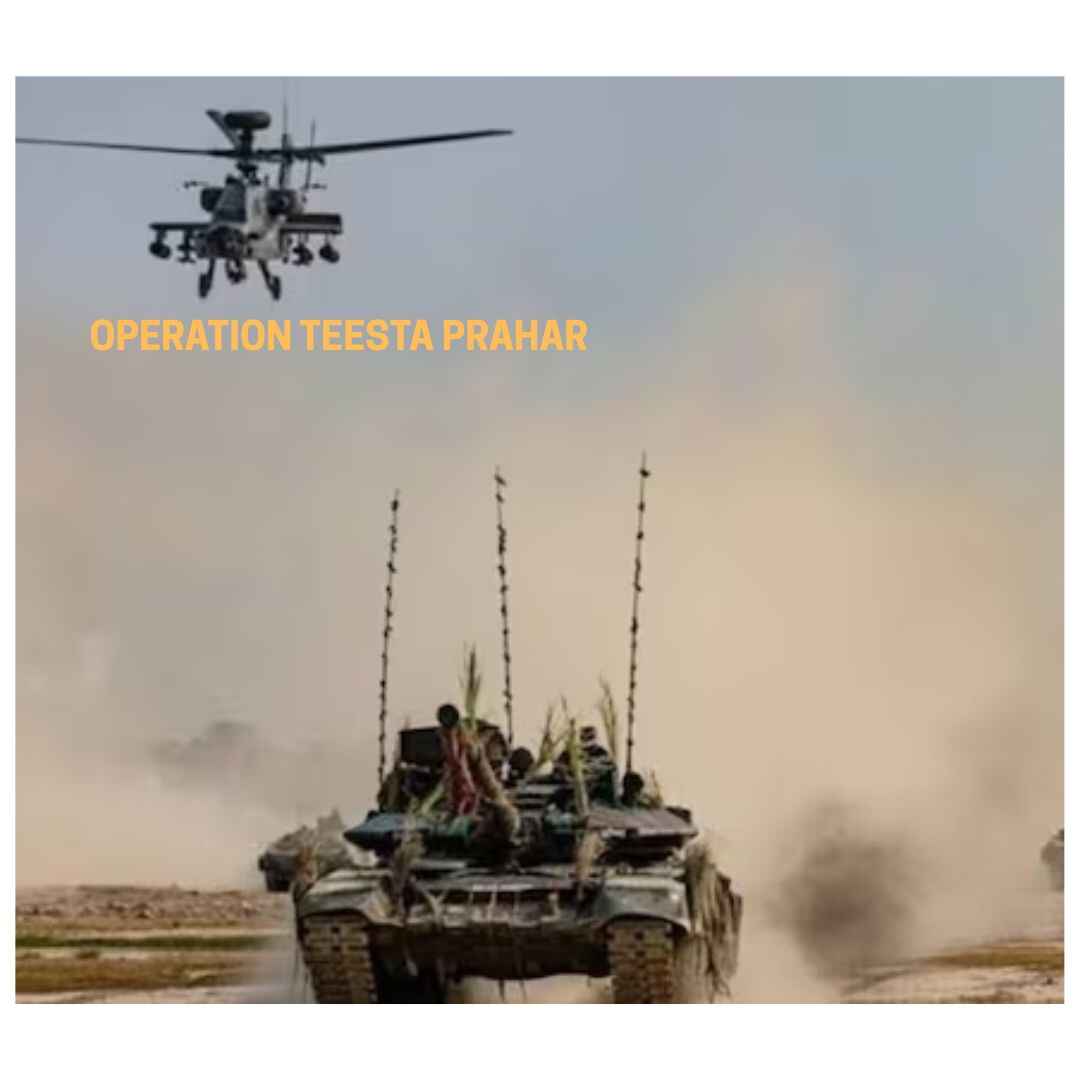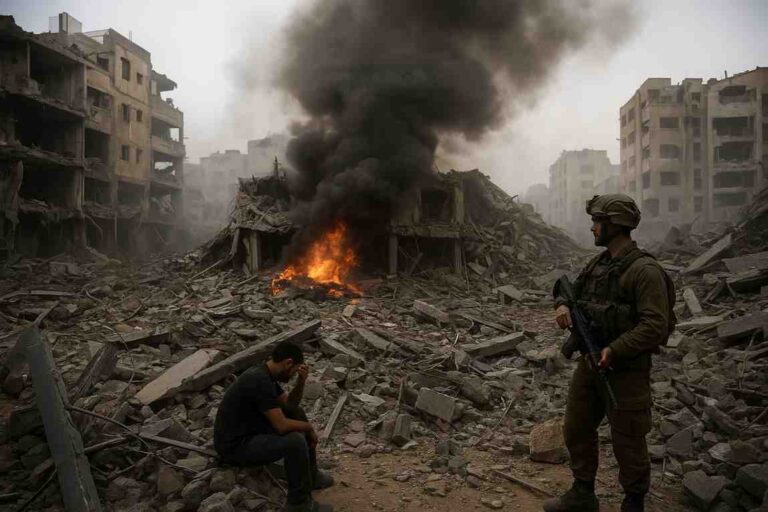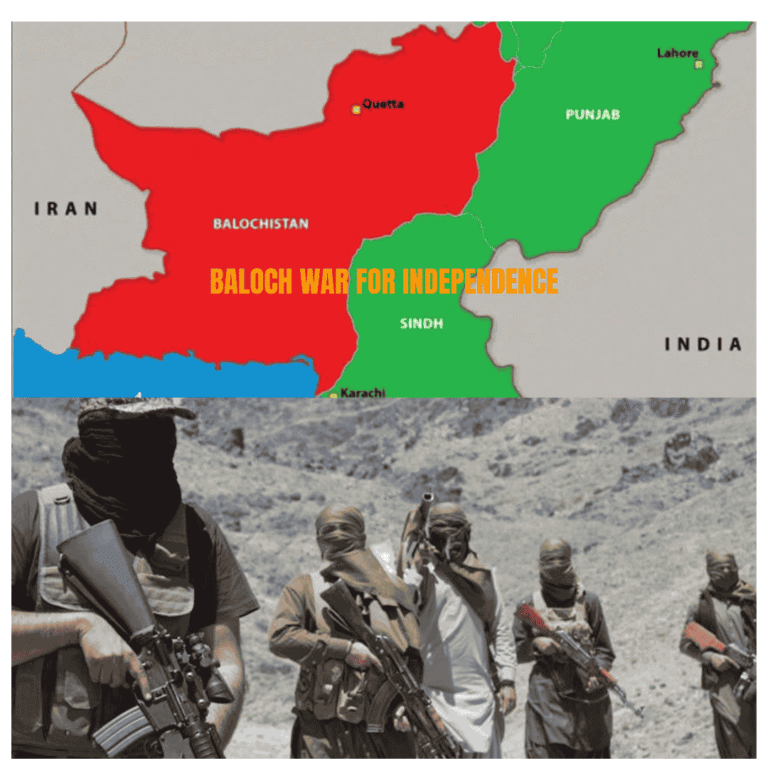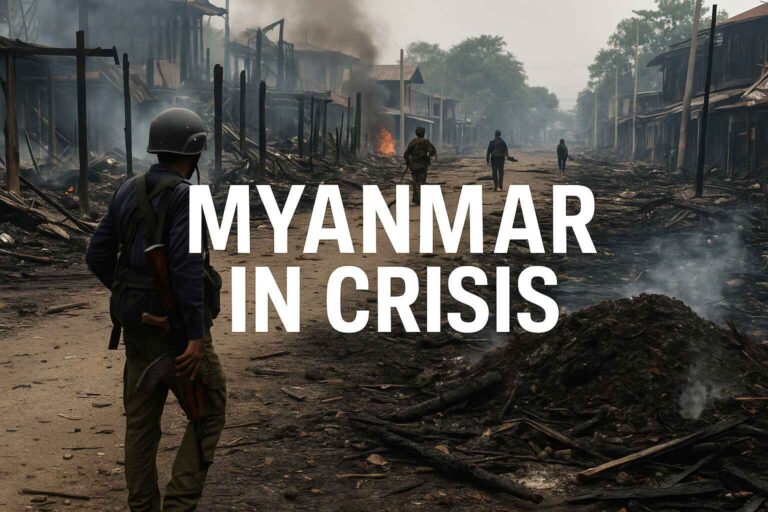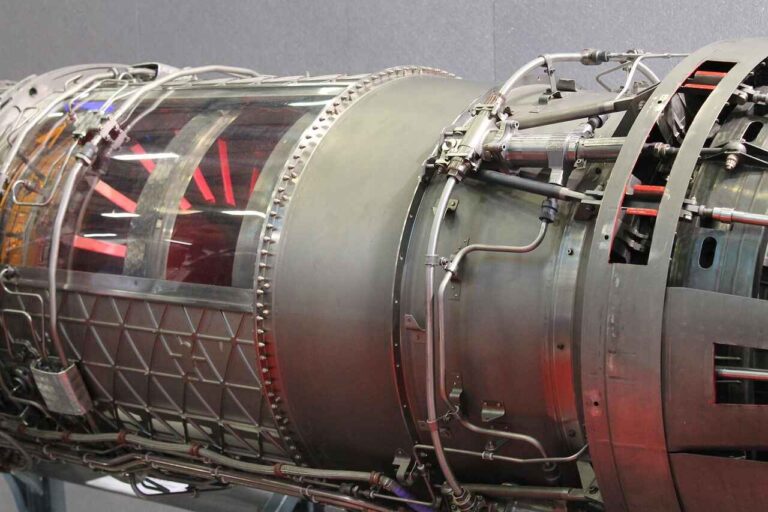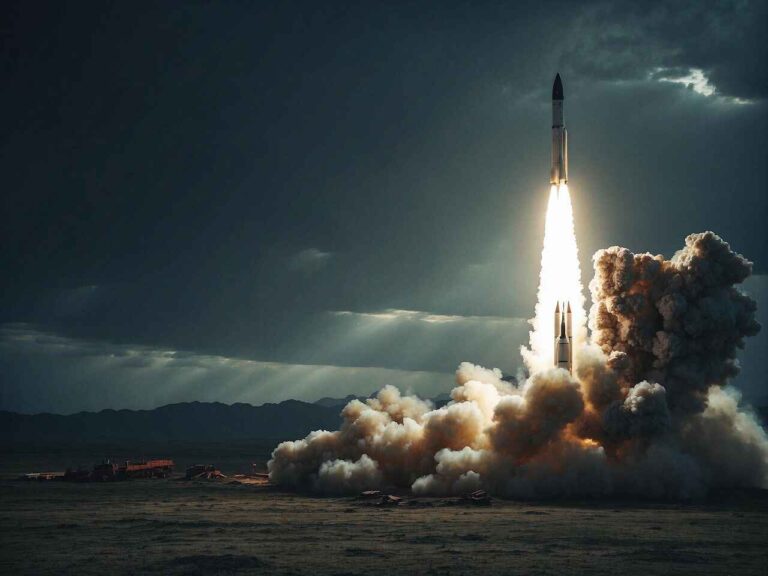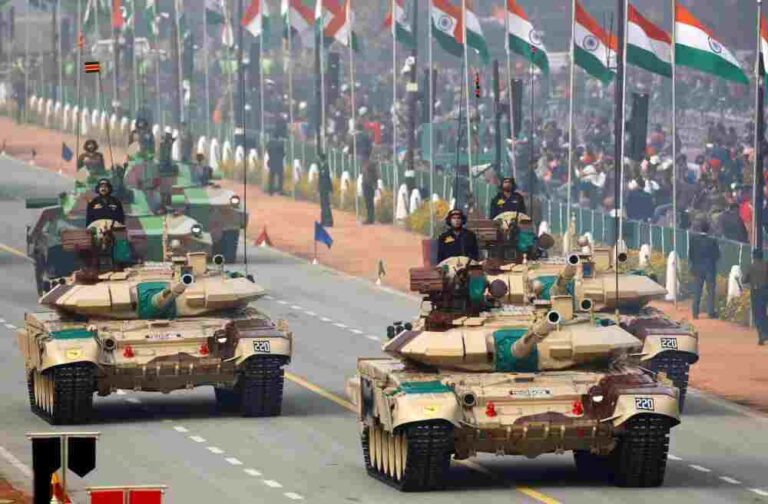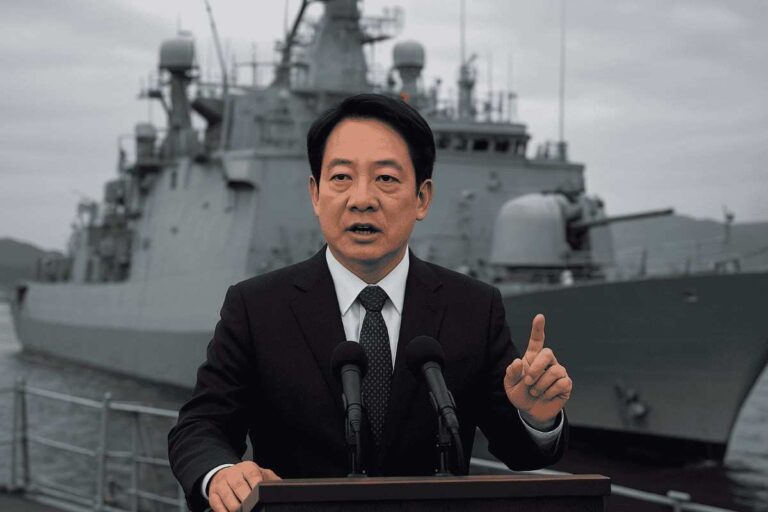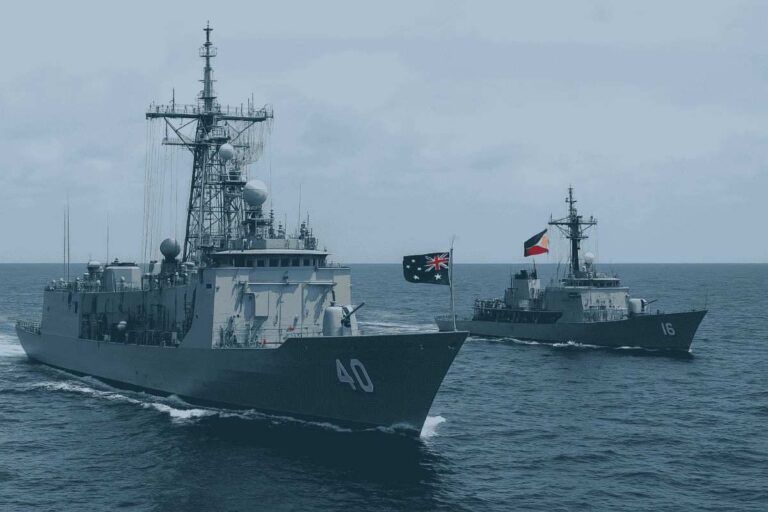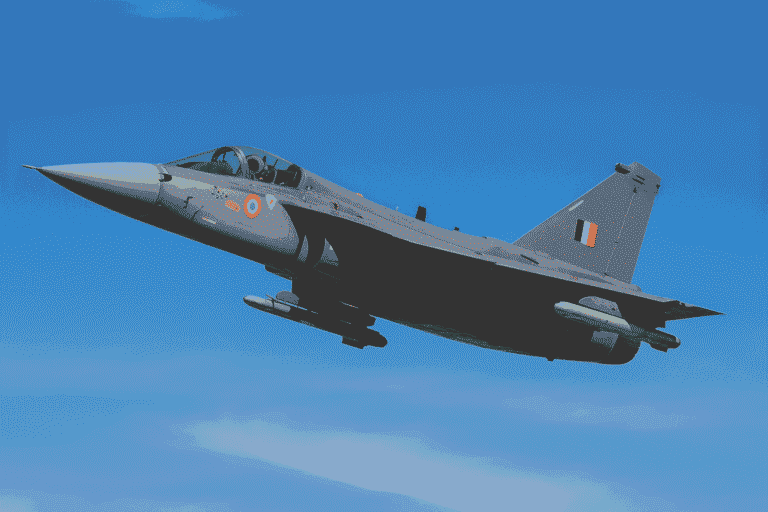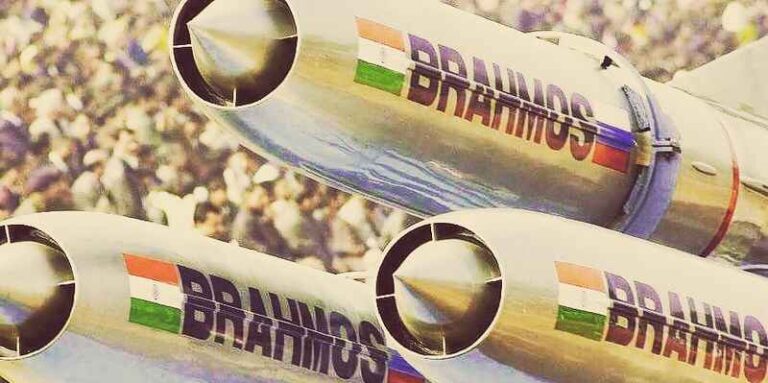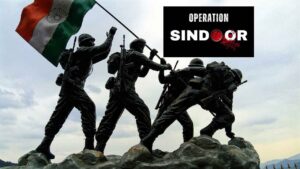Introduction
Operation Teesta Prahar was a high-altitude military exercise that was recently carried out by the Indian Army in the eastern sector. This operation was a proud demonstration of the Indian Army’s preparation for combat and strategic signalling.
The operation, conducted amid escalating tensions along India’s northern borders, aimed to examine the Indian Army’s ability to respond quickly to emergent threats in geographically complicated and strategically critical locations.
The drill, named after the Teesta River, a major geographical and geopolitical landmark in North Bengal and Sikkim, emphasizes India’s commitment to strengthening its defensive and offensive capabilities in the Eastern Himalayan theatre. With increased worries about Chinese military activity near the Line of Actual Control (LAC), this operation demonstrates a calibrated approach to deterrence, operational agility, and improved coordination across weapons and formations.
Strategic Context and Objectives
The conduct of Operation Teesta Prahar coincides with a volatile and unpredictable geopolitical situation along India’s northern frontier. Since the Galwan battles in 2020, India has adjusted its strategic stance along the Line of Actual Control (LAC), particularly in the eastern sector, which borders China’s Chumbi Valley, Bhutan, and the Siliguri Corridor. The eastern region’s vulnerability stems from its small topography and proximity to many international borders, making it a strategic flashpoint.
The major goal of the exercise was to validate the Indian Army’s capacity to quickly organize, deploy, and sustain high-readiness soldiers in a time-sensitive scenario including high-altitude fighting. It also aimed to put various combat arms- infantry, artillery, mechanized units, and air assets through real-time operational tests. The simulation stressed logistics resilience, surveillance integration, and command response, all of which are crucial in hilly warfare.
Furthermore, Operation Teesta Prahar has a dual purpose: it is both a practice run for real-world combat scenarios and a strategic statement to adversaries that India is attentive and prepared. It represents India’s evolving military doctrine, which sees forward posturing, fast force projection, and continual war-gaming as critical tools for deterrence and defense in a disputed environment.
Area of Operation
Operation Teesta Prahar was carried out in the strategically important regions of North Bengal and Sikkim, which border the vulnerable Siliguri Corridor-India’s narrow and key land access to its northeastern states. This corridor, also known as the “Chicken’s Neck,” is only approximately 20-25 kilometers wide but remains a focus point of Indian military preparation because to its vulnerability to disruption in the event of a conflict.
The Teesta River basin, which gives the operation its name, passes across this fragile terrain and serves as a topographical landmark for identifying crucial operative zones. The river’s path runs close to both the LAC with China and the Indo-Bhutan border, making it a prime location for any future multi-front security threat.
In recent years, Chinese activities in the Chumbi Valley, which connects Sikkim and Bhutan, have raised Indian concerns about flanking movements and potential encirclement.
By selecting this location for a large-scale war simulation, the Indian Army demonstrated its determination to control the eastern Himalayan terrain, strengthen its presence along critical entry routes, and train for high-altitude warfare in hostile terrain.
The area’s tough geography, inclement weather, and logistical constraints made it a perfect testbed for replicating real-time conflict conditions that Indian forces may encounter if the northern front erupted.
Participating Units and Forces
Operation Teesta Prahar brought together a broad range of Indian Army forces under Eastern Command, with the goal of displaying jointness, adaptability, and high-altitude fighting capabilities.
The drill largely involved personnel from the XXXIII Corps, which is in charge of defending the sensitive Sikkim region, but it also likely included elements from the IV Corps, which is in charge of securing Arunachal Pradesh. These formations are critical to India’s mountain warfare doctrine and have led the way in operational readiness along the country’s northern frontiers.
Infantry battalions, which were highly trained for high-altitude combat, served as the ground forces’ backbone, carrying out maneuvers across difficult terrain. They were supported by mechanized infantry detachments and light armored vehicles designed for the harsh Himalayan environment.
Artillery units, especially sophisticated 155mm howitzers and M777 lightweight field guns, were critical in simulating mountain firepower superiority by using precision targeting in coordinated fire missions.
Combat engineers and logistics teams ensured rapid mobility, bridge construction, and route clearance in tough terrain, which was critical for allowing troops and equipment to go forward continuously. Air defense battalions were also alerted to mimic aerial threats, reflecting the rising necessity to safeguard the battlefield against drone and helicopter assaults.
Helicopter detachments from the Indian Air Force and Army Aviation Corps supported the land component by performing airlift, reconnaissance, and casualty evacuation. Transport planes permitted rapid troop induction and repositioning, supporting the Indian military’s growing reliance on air mobility in mountain warfare.
Furthermore, specialist teams such as Signal Corps units and Electronic Warfare (EW) operators ensured continuous communications and monitored the electromagnetic spectrum for potential disruptions, thereby incorporating the cyber-electromagnetic realm into the larger battlefield simulation.
This combined force organization demonstrated the Indian Army’s transition from traditional linear deployments to multidimensional, theater-specific integrated operations, particularly in light of modern border threats in the eastern sector.
Manoeuvres & Drills
Operation Teesta Prahar was intended to rigorously test the Indian Army’s combat readiness through a series of sophisticated maneuvers and drills that emulated real-time battle scenarios in high-altitude terrain.
The exercise emphasized quick mobilization, force projection, and seamless coordination across all weapons and services in a high-tempo operational environment.
The practice focused on the execution of combined offensive and defense actions in steep terrain. These included the coordinated movement of infantry, armored columns, and mechanized formations through difficult terrain, aided by precise artillery bombardment.
Artillery units carried out live-fire operations using lightweight howitzers and long-range gun systems, demonstrating their efficiency in providing cover and depth in high-altitude battle zones.
The drill also included airborne troop insertion, with transport helicopters used to mimic heliborne operations beyond enemy lines. These operations put the Army’s ability to create temporary forward bases, launch surprise flank attacks, and extract quickly under fire to the test, all of which are critical in both asymmetric and conventional engagements.
observation and real-time information were significantly enhanced by the deployment of UAVs and battlefield observation radars, which provided target data and terrain intelligence to command centers. These skills enabled commanders to make real-time, data-driven decisions, which is critical in a rapidly changing war scenario.
Specialized drills included night warfare exercises, electronic warfare simulations, and CBRN (Chemical, Biological, Radiological, and Nuclear) readiness modules, reflecting India’s larger shift toward multi-domain operations. The use of logistics war games ensured that advance supply networks, casualty evacuation processes, and emergency response systems were thoroughly evaluated.
Overall, the exercises carried out during Operation Teesta Prahar demonstrated a doctrinal shift from static defensive tactics to proactive, nimble, and technology-enabled warfare designed expressly for India’s eastern front.
Message to China and Broader Region
At its core, Operation Teesta Prahar was not just a military readiness practice, but also a carefully calibrated strategic signal, aimed primarily at China and, secondarily, its neighbours and allies.
The operation’s location, scale, and timing highlighted India’s intent to assert control over the eastern sector and reinforce its red lines along the Line of Actual Control (LAC), especially in light of ongoing Chinese infrastructure buildup and force deployment near the Sikkim and Arunachal Pradesh borders.
The exercise reinforced India’s stance of deterrence through readiness, demonstrating that the Indian Army can respond quickly and proportionately to any attempt to disrupt the status quo.
By proving the ability to rapidly deploy and sustain combat units in high-altitude zones, India intended to counteract any perceived tactical advantage that China may be pursuing through aggressive patrols and infrastructure construction beyond the LAC.
Also, the operation sends a strong signal that India is not limited to a reactive stance. The Army’s emphasis on preemptive operational preparedness, integrated battle units, and joint-domain training supports a forward defense doctrine that seeks to deny adversaries any potential for strategic surprise.
Beyond China, the drill sends a message to Bhutan, Bangladesh, and the larger Indo-Pacific community. It reassures neighbouring countries of India’s commitment to regional peace and territorial integrity, while also underscoring India’s role as a net security provider in the eastern Himalayas.
It also sends a message to possible partners such as the United States, Japan, and Australia, India’s Quad allies that the country remains militarily committed and capable in the face of escalating Chinese aggressiveness throughout Asia.
Conclusion
Operation Teesta Prahar represents a watershed moment in India’s changing military stance, notably in the strategically important eastern theatre. In a period of fluid threats and high-altitude clashes, the exercise demonstrated the Indian Army’s capacity to quickly mobilize, integrate across arms, and carry out complicated operations in some of the most difficult terrain along the northern boundary.
More than an exercise, the operation sent a powerful message of deterrence, showcasing India’s commitment, operational agility, and forward-leaning doctrine in the face of increased regional aggression, particularly from China. It highlighted the Army’s transition toward proactive preparedness, technological integration, and joint-force synergy, all of which are essential for preserving strategic stability in an increasingly challenged security environment.
As India refines its military capabilities in response to evolving threats, such exercises will play an important role not just in war preparation, but also in strategic signaling, deterrence, and geopolitical impact in the Indo-Himalaya area.

